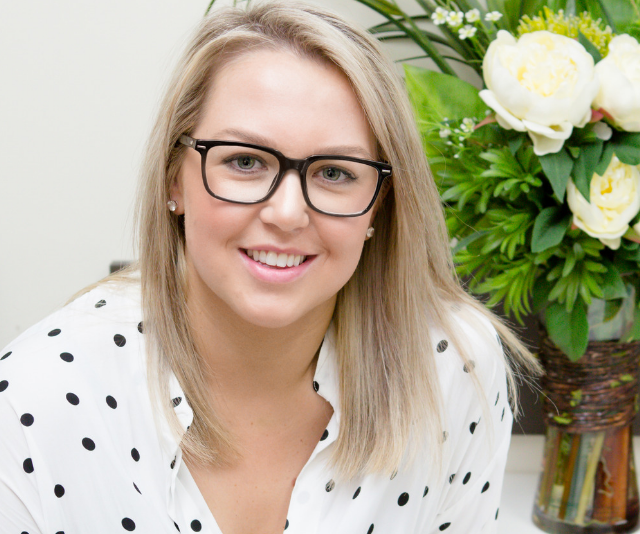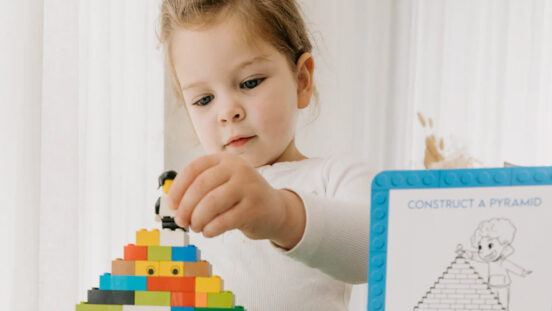The three things every parent needs to know before school shoe shopping this year
To buy bigger or not to buy bigger ... THAT is the question.
By Jessica Johnston
As schools get ready to head back after a long summer break, parents all over the country are scrambling to set up their children with shoes that will not only be good for their feet, but that will last beyond the first term.
It’s a challenge, but these tips will set you – and your kids – in good stead …

Leading Podiatrist, Jessica Johnston shares the three things every parent needs to know before school shoe shopping. (Image: Supplied)
1. Visit the professionals
Children spend approximately 40 hours a week wearing their school shoes so physically attending a store that provides a professional measure and fit is vital in selecting the perfect shoe. Specialist shoe retailers such as Clarks, Shoes & Sox and Myer are personal favourites for me as a Mum and Podiatrist.
Before you head to a store you should consider the following:
- Visit the professionals- parents should utilise specialised staff and not try this job at home with online shopping or in stores that don’t provide a thorough measure and fit.
- Allow plenty of time – given the cost investment and need for a perfect fit, this process should not be rushed. Shoe selection and fitting should be a relaxed and positive experience for both you and your child. Allow up to an hour for scoping your child’s preferred style, for the staff member to measure and fit your child’s foot, plus plenty of time to walk around the store wearing the shoe. Finally, ask your child for feedback; if its negative, try selecting another style, or if its positive, you can head straight to the checkout!
- Come prepared – bring along the type of sock your child would normally wear to school (e.g. thick sports sock, ankle sock, cotton knee high or stockings) to ensure the fit is accurate. If your child wears foot orthoses, it’s imperative these are worn in the fitting process as they can change the depth and width of the shoe required.
- Immediate comfort is so important – as a foot health professional, my pet hate is the outdated concept of ‘wearing shoes in’. A correctly fitted, high quality shoe will feel comfortable straight away. There should be no need to have to wear them to school for the first few weeks and suffer from blisters, aches or pains in the hope they will eventually feel comfortable down the track.
- Fit for now – while it’s tempting as a parent to go ‘up a size so the shoes last longer’, this can be detrimental to your child’s foot health. When a shoe it too big, it causes the foot to move around in turn creating friction which leads to callus formation, blisters and damaged toenails.
2. You get what you pay for!
This is what you should consider when choosing the budget for your child’s school shoes:
- Price point is directly related to the technology, construction and quality of the shoe – I have seen school shoes for as little as $15 in discount stores, however the shoes at this price point may look similar on the outside to your higher-end shoes, but its what’s on the inside that’s completely different. Often cheaper shoes will be made from a cardboard last, synthetic materials, poor quality soles and a weak shank, meaning the fit, comfort and durability will simply not compare to your higher price points.
- Finding the perfect fit for the foot- low cost shoes often only run in straight sizes and do not offer half sizes or different width fittings, offering an inferior fit for the child’s delicate and developing feet. Selecting a trusted brand like Clarks means you can choose from their full range of whole and half sizes, as well as width fittings to ensure the perfect school shoe fit.
- An investment in your child’s health – as parents and carers we always want the best for our children, whether it be a safe car seat, swimming lessons or nutritious meals, and I think quality footwear should be up there on this list.

When it comes to school shoes, you get what you pay for (Image: Getty Images)
3. School Shoes and Sports Shoes serve very different purposes, understand your child’s needs
Uniform regulations – check with your child’s school uniform policy before shoe shopping to ensure you select the correct shoe style. I caution against using a leisure type sneaker in schools where there are not footwear regulations.
- Traditional school shoes are generally non-negotiable at most schools, they provide a supportive, weatherproof, comfortable uniform staple.
- Sports shoes are clearly the best option for physical education classes and if there is significant distance travelling on foot to and from school. Look for similar characteristics in the sport shoe that school shoes do have. For example, a leather upper rather than a mesh upper keeps them drier on wet days, more durable and less chance of toes ripping holes in the top of the shoe. I would also look for a sturdy and supportive sports shoe rather than the ‘flexible/ free’ styles. Be mindful that a sports shoe will likely require replacing more frequently if worn for school, extra-curricular sport and weekend fun.
- Dual-function shoe perfect for the active student that requires the use of a traditional school shoe but with added comfort with sports shoe features.




